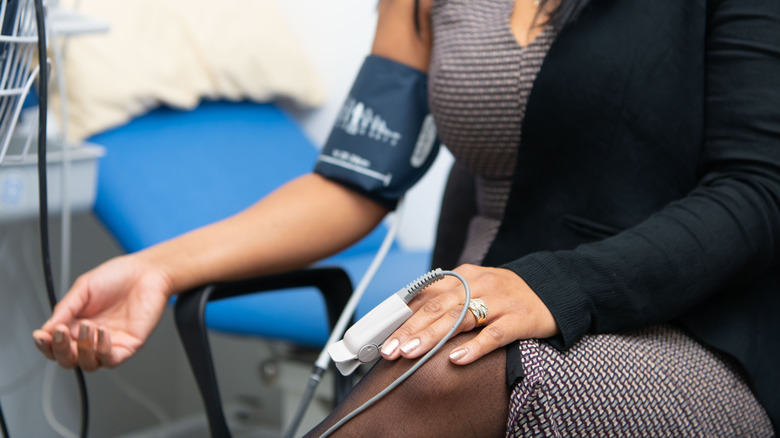What Your Diastolic Blood Pressure Number Really Means
If you've taken a trip to the doctor or spent any time watching medical procedural shows, then you're probably familiar with the standard blood pressure formula. A cuff is secured around the patient's upper arm and tightened. The nurse monitors the cuff, releases the pressure, and finally reads off a fraction. That number — usually something like "120 over 75" — is all the insight doctors usually need into the patient's blood pressure.
As familiar as the routine is, however, few people know what those two numbers mean. And just as importantly, they rarely know if the numbers are a good or bad sign. The American Heart Association says that any upper number (the systolic number) under 120 and any lower number (the diastolic number) under 80 is considered within the normal range. From there, blood pressure increases into ranges known as "elevated," "high blood pressure stage 1," "high blood pressure stage 2," and finally "hypertensive crisis."
Knowing these numbers can help patients make sense of their readings at the doctor's office. But knowing what each number means can help demystify the process and put the patient in better control of their health.
It's based on the location of the pressure
The American Heart Association defines the body's diastolic pressure as the force the blood exerts on the arterial walls when the heart is at rest. Generally speaking, as the Association points out, doctors focus on a patient's systolic pressure. This is especially true for people over the age of 50, as the number rises steadily as we age.
There may be another reason for doctors to focus on the systolic number, however. The National Heart Lung and Blood Institute made headlines in April 2021 when they reported how recent studies showed that lowering a patient's diastolic pressure separate from their systolic pressure could increase their risk of suffering a heart attack or a stroke. Lowering the patient's systolic pressure, however, lowers such risks. Thus, as the NHLBI puts it, focusing on the systolic pressure is still a patient's best bet.
Many people struggle with high blood pressure. Per the CDC, around half of all American adults suffered from hypertension in 2019. This number doesn't include adults whose blood pressure is elevated but not yet at levels that qualify as hypertensive, putting the number even higher. It is a dangerously common condition with many possible treatments. Patients may have to try a few before they see progress, but it is well worth the work.


